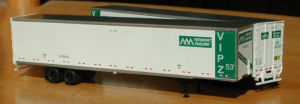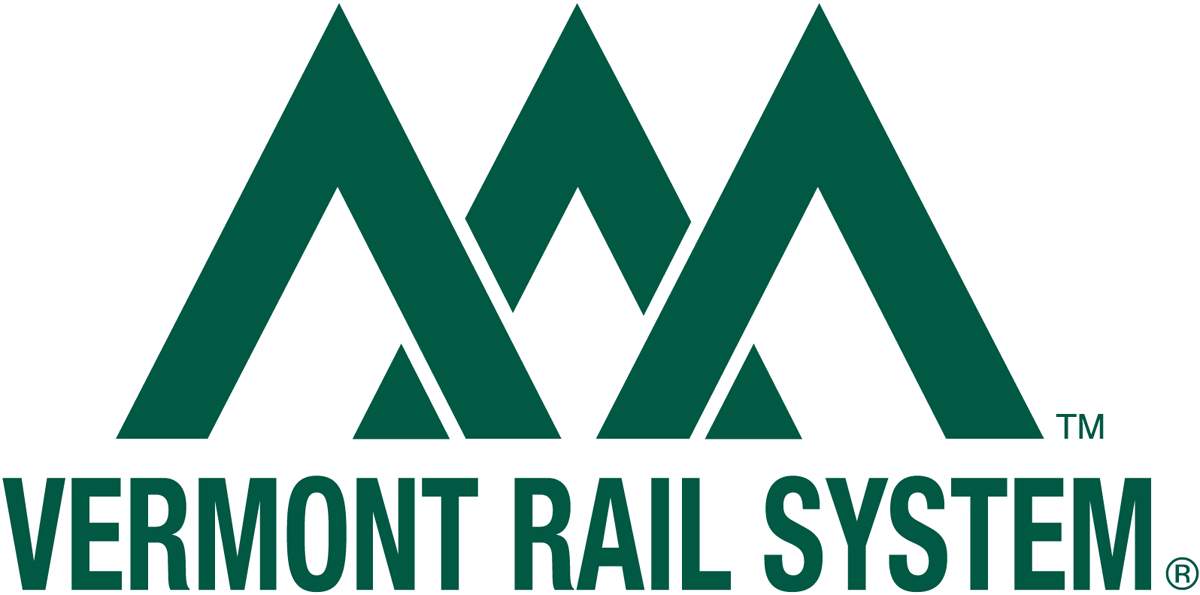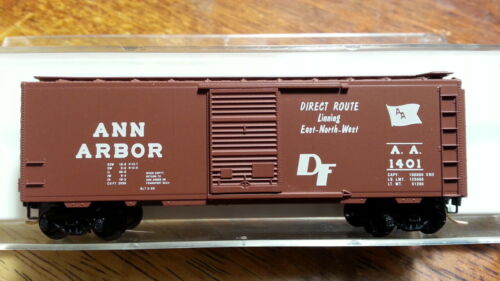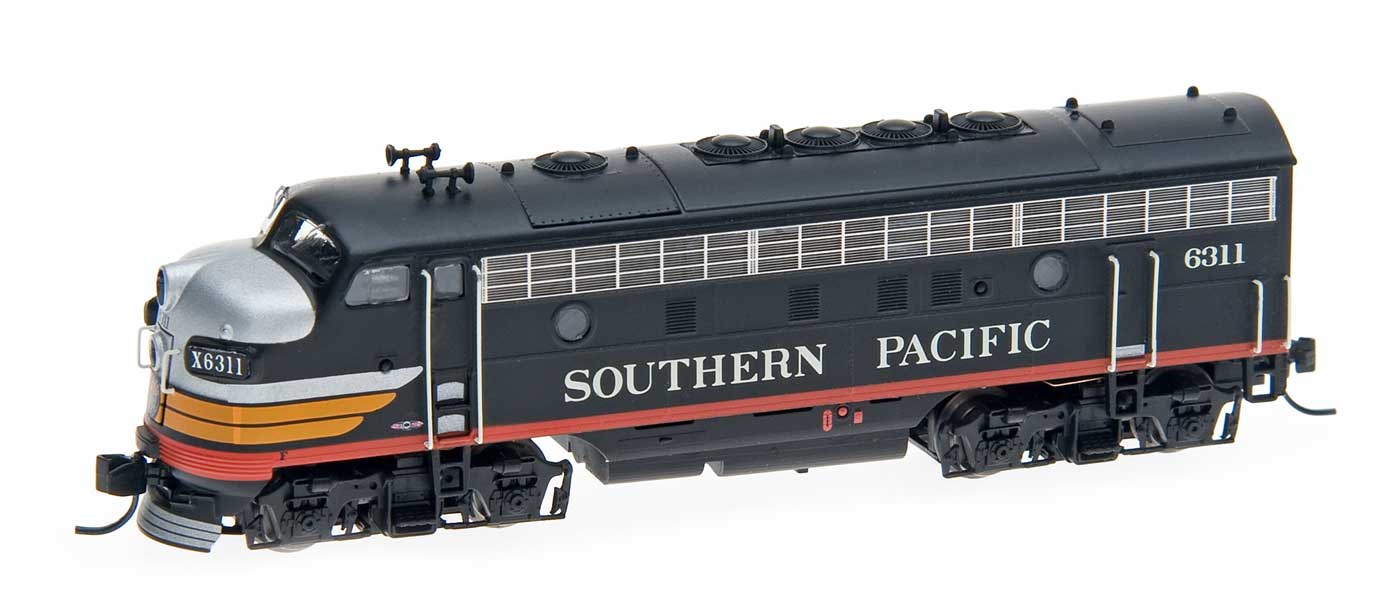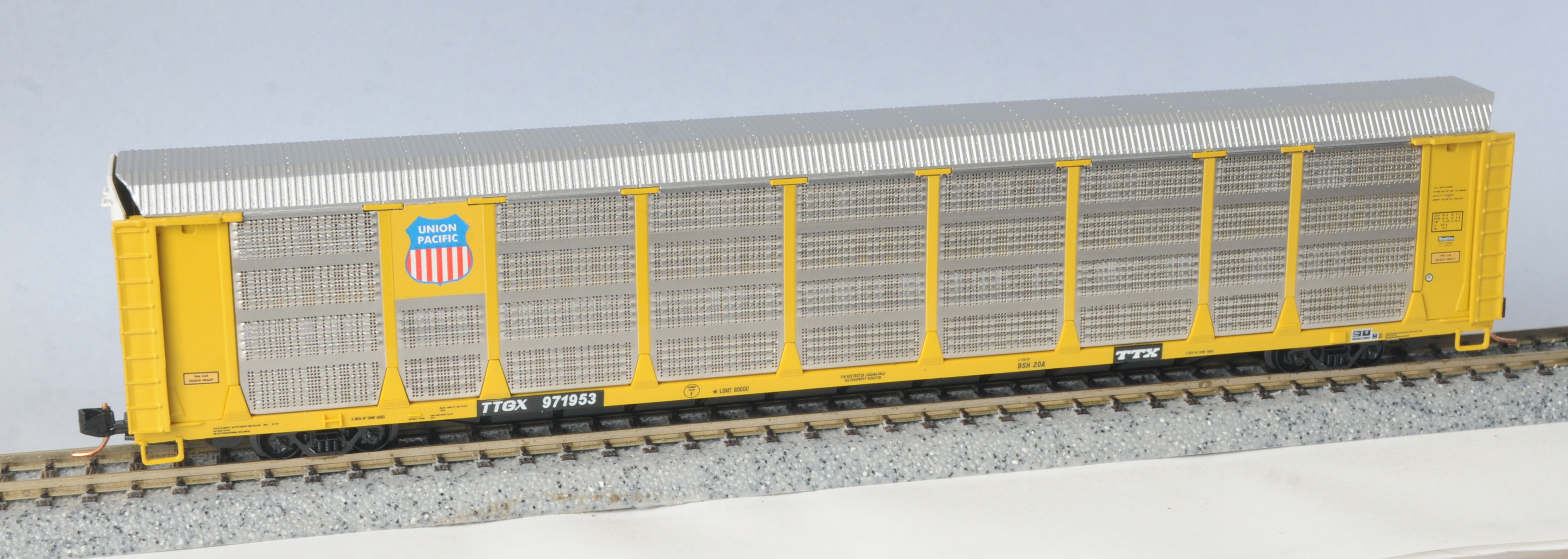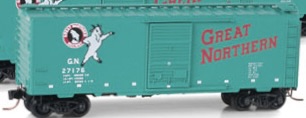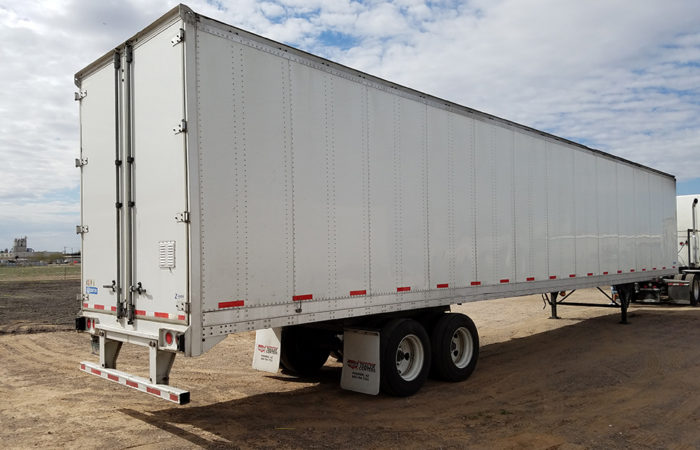Prototype History: For the longest time, the 48-foot dry van was the de facto standard in trucking, owing largely to older regulations which limited the overall length of the vehicle to 75 feet. Once the length laws went bye-bye in the late 1980s, the industry was quick to adopt the now-ubiquitous 53-foot vans - room for thirteen rows of pallets, plus a foot of leeway to make sure the doors could close easily. 53' are the longest that can go anywhere. Just checked with Caltrans for one of my projects and they said in CA 53' is max without special permit. Some states allow 57' (yep, they are out there, and they are BIG), but most will only do so by special permit. Truckers and shippers continue to push for 57' everywhere, along with double/triples (2 53' or 53' + 28' or 3 - 28'), plus heavier load limits. Watch out; if 57' and heavier loads become permissible everywhere, plus double/triples, large amounts of intermodal will disappear back to the roads.
Box vans are known as such for their rectilinear proportions. Their simple design makes them easy to manufacture and maintain.
Box vans are known as such for their rectilinear proportions. Their simple design makes them easy to manufacture and maintain.
Road Name History: The Vermont Railway (reporting mark VTR) is a shortline railroad in Vermont and eastern New York, operating much of the former Rutland Railway. It is the main part of the Vermont Rail System, which also owns the Green Mountain Railroad, the Rutland's branch to Bellows Falls. The trackage is owned by the Vermont Agency of Transportation except in New York, where VTR operates a line owned by the Boston and Maine Corporation.
The Rutland Railway was the only north-south line through western Vermont. A strike shut it down on September 25, 1961. The Government of Vermont purchased the main line south of Burlington, as well as a branch to Bennington, 128.6 miles (207.0 km) total, and the new Vermont Railway, incorporated on Oct. 25, 1963, began operations on January 6, 1964. The company's first president was Jay Wulfson, who came from the Middletown and New Jersey Railroad.
In 1997, the Vermont Railway purchased the Green Mountain Railroad, which ran 52.2 miles (84.0 km) from Rutland to Bellows Falls. This led to the formation of an umbrella company, named the Vermont Rail System, which owned both railroads, as well as several other shortlines in Vermont and New York.
The Rutland Railway was the only north-south line through western Vermont. A strike shut it down on September 25, 1961. The Government of Vermont purchased the main line south of Burlington, as well as a branch to Bennington, 128.6 miles (207.0 km) total, and the new Vermont Railway, incorporated on Oct. 25, 1963, began operations on January 6, 1964. The company's first president was Jay Wulfson, who came from the Middletown and New Jersey Railroad.
In 1997, the Vermont Railway purchased the Green Mountain Railroad, which ran 52.2 miles (84.0 km) from Rutland to Bellows Falls. This led to the formation of an umbrella company, named the Vermont Rail System, which owned both railroads, as well as several other shortlines in Vermont and New York.
Brand/Importer Information: DeLuxe Innovations is a "wholesale manufacturer" of model trains. We manufacture scale replica train models and sell them to hobby shops and distributors worldwide. 2013 marked the 20 year anniversary of DeLuxe Innovations brand trains. There are over 25 body styles in our product line and all of the cars in our single and multi-car packs have different road numbers. DeLuxe Innovations, Inc. is owned by Dave Ferrari, founder of Squeak N Products. We are located in Midland Park, New Jersey. When Dave purchased the business it was located in Burbank, California which would have been a bit of a long commute so the move to the East Coast was planned. Our first East Coast location was in Whippany, NJ along the Whippany River.
The business was started in 1993 by George Johnsen and Roberta Liebreich in Burbank, California. They had a philosophy that just wouldn't allow using a coal car as a "stand in" for a woodchip car, or printing any and all boxcar paint schemes on a PS-1. Starting with the release of the first ever etched metal parts for a ready to run car (1994's Twinstack's metal walkways) through the full dimension underframe and etched metal roofwalk (1996's 1944 AAR Boxcar) to the challenging RoadRailer system (2000), our products have been accurate to target the modeler or enthusiast.
You can also follow DeLuxe on Twitter
The business was started in 1993 by George Johnsen and Roberta Liebreich in Burbank, California. They had a philosophy that just wouldn't allow using a coal car as a "stand in" for a woodchip car, or printing any and all boxcar paint schemes on a PS-1. Starting with the release of the first ever etched metal parts for a ready to run car (1994's Twinstack's metal walkways) through the full dimension underframe and etched metal roofwalk (1996's 1944 AAR Boxcar) to the challenging RoadRailer system (2000), our products have been accurate to target the modeler or enthusiast.
You can also follow DeLuxe on Twitter
Item created by: Powderman on 2018-09-29 11:52:32. Last edited by CNW400 on 2020-05-28 23:16:34
If you see errors or missing data in this entry, please feel free to log in and edit it. Anyone with a Gmail account can log in instantly.
If you see errors or missing data in this entry, please feel free to log in and edit it. Anyone with a Gmail account can log in instantly.


